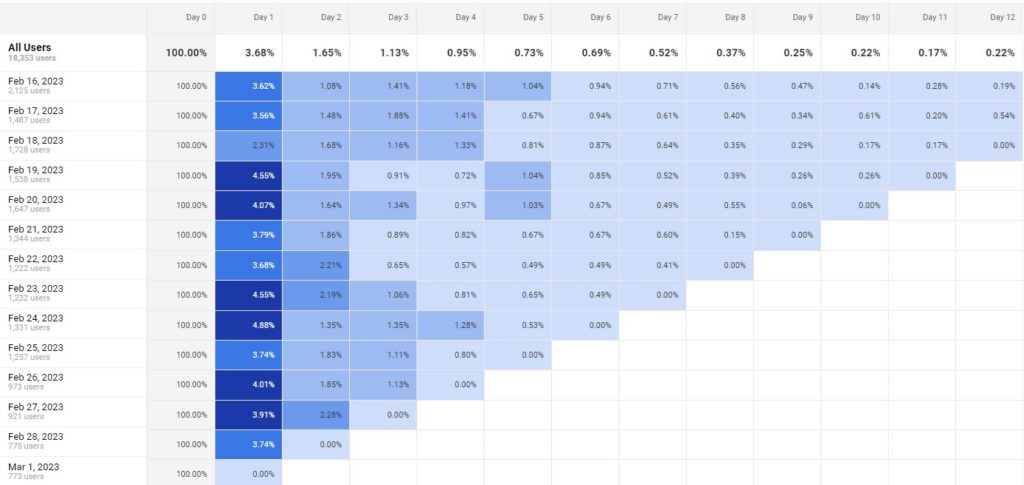What is a Cohort Analysis report?
A cohort analysis report is a type of data analysis that groups users or customers into segments based on shared characteristics, such as the date they signed up, their geographic location, or their behavior patterns. Cohort analysis tracks the behavior and performance of these groups over time, allowing businesses to see how their customers are changing and how to adapt their strategies accordingly.
The report typically includes a chart or table that shows how a particular metric, such as retention rate, revenue, or customer lifetime value, varies by cohort over time. This allows businesses to see which groups are performing well and which ones are not, and to identify trends and patterns that may be affecting customer behavior.
Cohort analysis is a powerful tool for understanding customer behavior and making data-driven decisions. It can be used to measure the impact of changes to a product or service, to identify areas for improvement, and to develop more targeted marketing strategies.
here is an example of a cohort analysis report that tracks the retention rate of customers based on their signup month:
| Cohort Month | Month 1 | Month 2 | Month 3 | Month 4 | Month 5 | Month 6 |
|---|---|---|---|---|---|---|
| Jan 2023 | 100% | 65% | 50% | 40% | 30% | 25% |
| Feb 2023 | 100% | 70% | 55% | 45% | 35% | – |
| Mar 2023 | 100% | 75% | 60% | 50% | – | – |
| Apr 2023 | 100% | 80% | 65% | – | – | – |
Here is and example of a cohort report
In this example, the report shows the retention rate of customers who signed up in each month (the “cohort”) over the first six months of their membership.
For example, for the January 2023 cohort, 100% of customers who signed up in that month remained customers in the first month, but only 65% were still customers in the second month, and so on. By contrast, the February 2023 cohort had a higher retention rate in the second month (70%), indicating that customers who signed up in February were more likely to stick around than those who signed up in January.
The report allows businesses to identify which cohorts are performing well and which ones are not, and to adjust their retention strategies accordingly. In this example, businesses might focus on improving retention for the January 2023 cohort, which had a relatively steep drop-off in the first few months, while continuing to target customers who signed up in February, who appear to be more likely to stick around.

